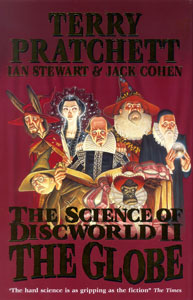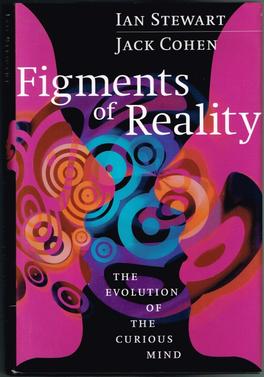
Ronald William "Josh" Kirby was a British commercial artist. Over a career spanning 60 years, he was the artist for the covers of many science fiction books including Terry Pratchett's Discworld novels.

Sir Terence David John Pratchett was an English author, humorist, and satirist, best known for his 41 comic fantasy novels set on the Discworld, and for the apocalyptic comedy novel Good Omens (1990) which he wrote with Neil Gaiman.

An overwhelming majority of fiction is set on or features the Earth, as the only planet home to humans. This also holds true of science fiction, despite perceptions to the contrary. Works that focus specifically on Earth may do so holistically, treating the planet as one semi-biological entity. Counterfactual depictions of the shape of the Earth, be it flat or hollow, are occasionally featured. A personified, living Earth appears in a handful of works. In works set in the far future, Earth can be a center of space-faring human civilization, or just one of many inhabited planets of a galactic empire, and sometimes destroyed by ecological disaster or nuclear war or otherwise forgotten or lost.

The Light Fantastic is a comic fantasy novel by Terry Pratchett, the second of the Discworld series. It was published on 2 June 1986, the first printing being of 1,034 copies. The title is taken from L'Allegro, a poem by John Milton, and refers to dancing lightly with extravagance, although in the novel it is explained as "the light that lies on the far side of darkness, the light fantastic. It was a rather disappointing purple colour."

Ian Nicholas Stewart is a British mathematician and a popular-science and science-fiction writer. He is Emeritus Professor of Mathematics at the University of Warwick, England.

Rincewind is a fictional character who appears in several of the Discworld novels by Terry Pratchett. He was a failed student at Unseen University for wizards in Ankh-Morpork, often described as "the magical equivalent to the number zero". He spent most of his time running away from people who wanted to kill him for various reasons. The reason that he was still alive and running was explained by noting that while he was born with a wizard's spirit, he had the body of a long-distance sprinter.
Jack Cohen was a British reproductive biologist also known for his science books and involvement with science fiction.

The Science of Discworld II: The Globe is a 2002 book written by British novelist Terry Pratchett and science writers Ian Stewart and Jack Cohen. It is a sequel to The Science of Discworld, and is followed by The Science of Discworld III: Darwin's Watch.

The Science of Discworld is a 1999 book by novelist Terry Pratchett and popular science writers Ian Stewart and Jack Cohen. Three sequels, The Science of Discworld II: The Globe, The Science of Discworld III: Darwin's Watch, and The Science of Discworld IV: Judgement Day, have been written by the same authors.

The Science of Discworld III: Darwin's Watch (2005) is a book set on the Discworld, by Terry Pratchett, Ian Stewart and Jack Cohen. It is the sequel to The Science of Discworld and The Science of Discworld II: The Globe.

The Discworld Companion is an encyclopaedia of the Discworld fictional universe, created by Terry Pratchett and Stephen Briggs. Four editions have been published, under varying titles.

The Discworld Diaries are a series of themed diaries based on the Discworld novels by Terry Pratchett. Each one is based on an Ankh-Morpork institution, and has an opening section containing information about that institution written by Pratchett and Stephen Briggs.

Figments of Reality: The Evolution of the Curious Mind (1997) is a book about the evolution of the intelligent and conscious human mind by biologist Jack Cohen and mathematician Ian Stewart.

The Collapse of Chaos: Discovering Simplicity in a Complex World (1994) is a book about complexity theory and the nature of scientific explanation written by biologist Jack Cohen and mathematician Ian Stewart.

Terry Pratchett's The Colour of Magic is a fantasy-comedy two-part British television adaptation of the bestselling novels The Colour of Magic (1983) and The Light Fantastic (1986) by Terry Pratchett. The fantasy film was produced for Sky1 by The Mob, a small British studio, starring David Jason, Sean Astin, Tim Curry, and Christopher Lee as the voice of Death. Vadim Jean both adapted the screenplay from Pratchett's original novels, and served as director.

Ankh-Morpork is a fictional city-state the setting for many Discworld novels by Terry Pratchett.

Discworld is a comic fantasy book series written by the English author Terry Pratchett, set on the Discworld, a flat planet balanced on the backs of four elephants which in turn stand on the back of a giant turtle. The series began in 1983 with The Colour of Magic and continued until the final novel The Shepherd's Crown, which was published in 2015, following Pratchett's death. The books frequently parody or take inspiration from classic works, usually fantasy or science fiction, as well as mythology, folklore and fairy tales, and often use them for satirical parallels with cultural, political and scientific issues.

The Science of Discworld IV: Judgement Day is a book set on the Discworld, by Terry Pratchett, Ian Stewart and Jack Cohen. It is the sequel to The Science of Discworld, The Science of Discworld II: The Globe and The Science of Discworld III: Darwin's Watch.
The Long Earth is a collaborative science fiction novel series by British authors Terry Pratchett and Stephen Baxter.

The Sam Vimes "Boots" theory of socioeconomic unfairness, often called simply the boots theory, is an economic theory that people in poverty have to buy cheap and subpar products that need to be replaced repeatedly, proving more expensive in the long run than more expensive items. The term was popularized by English fantasy writer Sir Terry Pratchett in his 1993 Discworld novel Men at Arms. In the novel, Sam Vimes, the captain of the Ankh-Morpork City Watch, illustrates the concept with the example of boots.



















